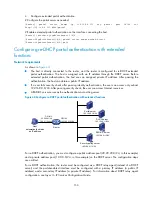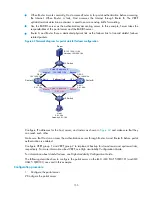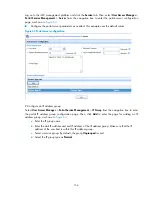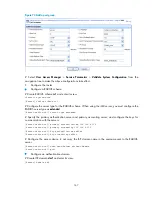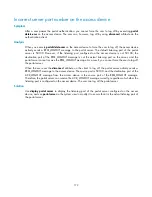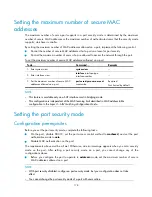
164
Figure 68
Network diagram for configuring portal server detection and portal user synchronization
Configuration considerations
1.
Configure the portal server, and enable portal server heartbeat function and the portal user
heartbeat function.
2.
Configure the RADIUS server to implement authentication and accounting.
3.
Configure direct portal authentication on interface Gigabitethernet 1/0/2, which is directly
connected with the host.
4.
Configure the portal server detection function on the access device, so that the access device can
detect the status of the portal server by cooperating with the portal server heartbeat function.
5.
Configure the portal user information synchronization function, so that the access device can
synchronize portal user information with the portal server by cooperating with the portal user
heartbeat function.
Configure IP addresses for the host, router, and servers as shown in
and make sure that they
can reach each other.
Perform configurations on the RADIUS server to ensure that the user authentication and accounting
functions can work normally.
The following describes how to configure the portal server on the iMC. iMC PLAT 5.0(E0101) and iMC
UAM 5.0(E0101) are used in this example.
Configuration procedure
1.
Configure the portal server.
# Configure the portal server.
Log on to the iMC management platform and click the
Service
tab. Then, select
User Access Manager
>
Portal Service Management
>
Server
from the navigation tree to enter the portal server configuration
a.
Configure the portal server heartbeat interval and user heartbeat interval.
b.
Use the default value for other parameters.

